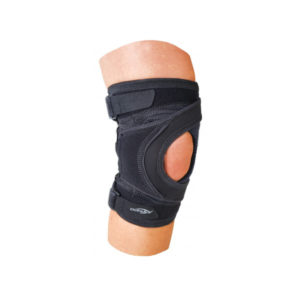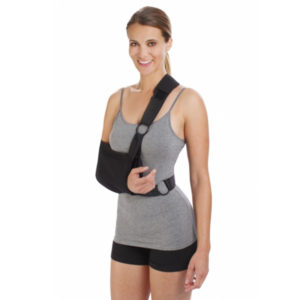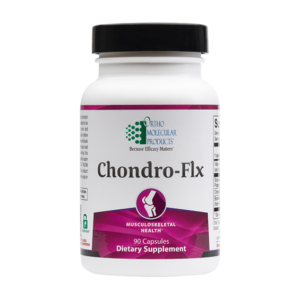General FAQs
Primary Care Sports Medicine (PCSM) physicians are specialists who have completed additional Fellowship training in the field of Sports Medicine. This involves specialized training in both the treatment and prevention of illness and injury. Sports medicine physicians have typically completed training in a residency of: Family Medicine, Pediatrics, Internal Medicine, Emergency Medicine, Physical Medicine & Rehabilitation, Osteopathic Manipulative Medicine, Neurology, or Orthopedic Surgery. Dr. Clearfield is Board Certified in Family Medicine & Osteopathic Manipulative Medicine in addition to Primary Care Sports Medicine.
Everyone that moves is an athlete! There are varying levels of athletes, from the professional athlete to the child in Pop Warner football to the great grandmother who wants to go for her daily walk. We treat all levels of athletes, with the goal of keeping you moving!
5 years old and up. So we can see the 5 year old who fell off the monkey bars, the 16 year old with a concussion, the 28 year old who is wanting to enhance their marathon training, the 47 year old with the degenerative rotator cuff tear, or the 103 year old with the knee arthritis.
At Motion is Medicine we treat “from toes to nose!” This means we can treat any joint or muscle throughout the body. We also treat concussion head injuries, nerve injuries (such as carpal tunnel syndrome and sciatica), common dermatologic conditions (ie: plantar warts), ingrown toenails or nail injuries, auricular hematomas (which can develop into cauliflower ear), muscle hematomas, ganglion cysts, as well as cardiac, respiratory, gastrointestinal, or other systemic issues that are affecting an athlete. For short, if it is something that is causing pain or keeping you from moving or performing, we can treat it!
This is a good question. Not all injuries require treatment, and we are fond believers in the body’s ability to heal itself. Of course, if you have a significant injury that is causing a lot of pain, then we recommend you come in right away. We can often work you in that day or the next, so going to the ER is not needed. If you have a concussion, then it is also recommended to seek care soon after the injury, and research has shown seeking care earlier equals a faster recovery for this injury. If your injury is not too bothersome, then taking it easy, icing the area, and working on some stretching should be enough. If it is still bothersome after a couple of weeks then it would be the time to schedule to come and see us.
There are two types of physicians in the United States, D.O.’s (Doctors of Osteopathic Medicine) and M.D.’s (Doctors of Allopathic Medicine). Both types of physicians have completed 4 years of medical school, then a 1-year internship and a Residency consisting of 3-6 years, and some go on to complete a Fellowship for another 1-3 years. Both DOs and MDs can practice all types of medicine and surgery. DOs are additionally taught Osteopathic Manipulative Medicine while in their medical training. The philosophy and patient approach of Osteopathic Medicine slightly differs from traditional Allopathic Medicine training. DOs learn a patient-centered and more holistic approach of medicine. The four principles of Osteopathic Medicine are:
- The body is a unit; the person is a unit of body, mind, and spirit
- The body is capable of self-regulation, self-healing, and health maintenance
- Structure and function are reciprocally interrelated
- Rational treatment is based upon an understanding of the basic principles of body unity, self-regulation, and the interrelationship of structure and function
Dr. Clearfield is a firm believer in these principles and uses them to guide him in every patient encounter.
OMT, or osteopathic manipulative treatment (also called osteopathic manipulative medicine (OMM)), is a hands-on treatment taught to all D.O.s, Doctors of Osteopathic Medicine. OMM involves the physician using their hands to diagnose and treat dysfunctions of the body. This can include treating chronic musculoskeletal conditions, nerve entrapments, as well as various illnesses can be assisted with OMT.
While all D.O.s are taught this, not all routinely use it in their practice. In addition to his Sports Medicine Fellowship, Dr. Clearfield has completed additional training with a Fellowship in OMM so he can be more well-rounded in treatments he can offer his patients. He is a world expert on performing OMT and has taught nationally and internationally.
At Motion is Medicine we have elected to not accept insurance so we are able to deliver you the best quality of health care. We may be able to be covered by your insurance as an out of network provider; check with your insurer to see if this is the case. We do not partner with Medicare or Medicaid so you cannot seek reimbursement for our services if this is your primary insurer. At Motion is Medicine we aim to have reasonable and transparent prices for our services, no surprise bills later!
Insurance and insurance companies have been disastrous to the health care profession. Medicine should be about wellness and insurance has turned medicine into a business. When you see your doctor, you are a patient, not a client. Insurance companies often have people with no medical training dictating how you should be treated. Additionally, for most doctors to make money from insurance they need to see as many patients as possible, leaving little time for your problem to be adequately addressed. This is not the model of medicine we believe you should be given. Because of this, we forego this system. You are still able to use your insurance, as we will give you a superbill with all of the codes needed to seek reimbursement from your insurance company. Many patients often find that it is cheaper to see us for cash than it is to use their insurance (notably with ridiculously high deductibles and surprise bills they receive months after their visit). At Motion is Medicine we are transparent about our prices, and there are no surprises down the road after your visit. Most importantly, you are given the BEST quality care, and given plenty of time with your doctor to be seen, listened to, and figure out how to get you moving again!
Regenerative Orthopedic Medicine FAQs
Regenerative orthopedic medicine (ROM), also known as Orthobiologics, uses an injected solution to help the body heal itself when it has forgotten how. Injection of growth factors or growth factor stimulants can result in growth of normal cells or tissues, stabilization of joints, and reduction or elimination of pain. Most importantly, these procedures improve the function of your injured or degenerative tendon, ligament, and/or joint!
Cortisone, aka: corticosteroid or steroid shots, are widely used in orthopedics. These injections do not do anything to repair the tissue, they can merely cover the pain up, and have also been shown to have degenerative effects on the tissue (eg: leading to further arthritis). Regenerative orthopedic medicines actually work on the opposite end of the healing process, allowing for the good aspects of natural inflammation and healing to occur while not degenerating/breaking-down the tissue. Instead, it stabilizes and even potentially regenerates the tissue!
In the first few days after the procedure, the tissue is like an infant, it is actively growing and needs to be handled carefully. In the next two weeks the tissue is like a 5 year old; it can do things, but you definitely should not push it (you can take a 5 year old for a walk but you likely wouldn’t take them for a 5 mile run!). Over the next month the tissue continues to mature, stabilize, and by the 12 week period the tissue has regained full function in most individuals.
Dr. Clearfield prides himself in having as painless of an injection as possible. He numbs the skin with a cool spray and then numbs just under the skin with anesthetic (where most of the pain receptors are found). Many patients do not even feel the injection while it is being performed, earning Dr. Clearfield the nickname of “The Injection Ninja!”
Compared to conventional steroid injections, there are actually far less adverse effects with regenerative medicine injections. There is a small risk of infection, as there is with any type of procedure that pierces the skin. Dr. Clearfield employs an aseptic technique to avoid any type of infection. Some patients experience an aching or throbbing pain after the regenerative procedure. This pain typically goes away after 1-2 days and Dr. Clearfield provides pain medication should this be bothersome.
Most insurance companies consider regenerative orthopedic medicine treatments as experimental and will therefore not pay for them. Most of this stems from improper medical billing practice years ago that led insurance companies to label these treatments as experimental. There are many “stem cell clinics” falsely advertising the benefits of what their treatments can do as well as what they are injecting. Many of these clinics use birth products (ie: amniotic fluid, umbilical cord tissue, Wharton’s jelly tissue) which after cleansing and purification processes do NOT CONTAIN ANY LIVE STEM CELLS WITHIN THEM. Because of the controversy surrounding the use of these, Dr. Clearfield does NOT use any of these birth products. All ROM procedures performed at Motion is Medicine is from your own body to ensure your safety!
Not everyone is a great candidate for regenerative orthopedic medicine treatments. If you have a history of, or ongoing cancer, certain blood diseases (ie: hemophilia), or are on chronic anticoagulation therapy (ie: warfarin, dabigatran, heparin, etc) then your case can be discussed with Dr. Clearfield to see if this is going to be the best treatment for you. Dr. Clearfield often collaborates with hematologists/oncologists to determine safety in performing these if warranted.
The hope is these regenerative orthopedic medicine treatments can lead to long-term results achieving your full (realistic) function. That said, if you do not correct your body’s biomechanics issues that led toward you developing your problem/injury, then it is more likely to return. Dr. Clearfield partners with physical therapists convenient to where you live or work to maximize your success.
Athletic Training FAQs
Athletic Trainers (ATs) are healthcare professionals who provide service or treatment under the direction of or in collaboration with a physician. As a part of the healthcare team, services rendered by ATs include injury and illness prevention, wellness promotion and education, emergent care, examination and clinical diagnosis, therapeutic intervention, and rehabilitation of injuries and medical conditions. Athletic training is recognized by the American Medical Association (AMA) as a healthcare profession.
ATs are employed in a wide range of professional settings, including professional and collegiate sports, secondary and intermediate schools, sports medicine clinics, hospital ER and rehab clinics, occupational settings, military/government/law enforcement, physician offices, and dance/fine arts.
ATs are trained to assess the status of postoperative, chronic, acute and subacute musculoskeletal injuries, illnesses, and conditions to determine impairments, functional limitations, and disability. Based on this assessment, they determine the appropriate treatment goals and therapeutic interventions to reduce the extent of a patient’s disability. Athletic trainers modify the treatment plans based on continual assessment of the patient and discharge the patient once treatment goals are met.
ATs complete a two-year program in an accredited master’s program and are certified by the Board of Certification Inc. The profession is regulated in most states through licensure.
Athletic trainers are classically found providing medical coverage for sporting events and caring for athletes from the grade school setting to professional athletics. As the profession expands, you might find athletic trainers in physical therapy clinics, sports performance facilities, physician practices, out-patient hospital settings, industrial workplaces, performing arts, or sales positions for medical equipment companies.
No, you do not have to be an athlete. Although the traditional patient population has been athletes, athletic trainers can treat and care for a wide variety of patients with a wide range of musculoskeletal conditions and injuries.
Athletic trainers have a portion of their education dedicated to managing emergent care situations, which is necessary for providing medical coverage for sporting events. Physical therapists are qualified to provide therapeutic care for medical conditions outside of the orthopedic realm, including cardiac rehab, stroke and paralysis recovery, vertigo, Parkinson’s Disease, and muscular dystrophy; whereas athletic trainers specialize in musculoskeletal injuries and conditions.
It depends. If you are an athlete looking for a sports performance program, yes, you can see our Athletic Trainer Jessica directly. If you have an injury, you must see Dr. Clearfield first for an evaluation, and he will then refer you to see Jessica.





